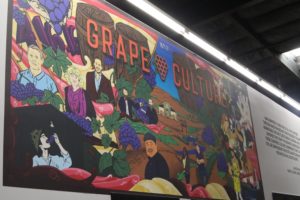
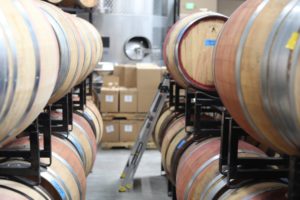
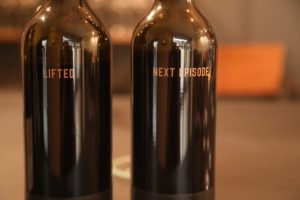 Grape Culture is not only the name of a Napa Valley winery, but it refers to a way of living, embracing wine, people, places and history. The winery name is an homage to the book, Grape Culture, Wines, and Wine-Making written in 1861 by Agoston Haraszthy, the founder of Buena Vista Winery in neighboring Sonoma County and one of California’s earliest wine pioneers. This book is the compilation of his personal journals written while visiting European wine regions in 1858 while collecting an amazing amount of detailed information about both European and California agriculture and his travels.
Grape Culture is not only the name of a Napa Valley winery, but it refers to a way of living, embracing wine, people, places and history. The winery name is an homage to the book, Grape Culture, Wines, and Wine-Making written in 1861 by Agoston Haraszthy, the founder of Buena Vista Winery in neighboring Sonoma County and one of California’s earliest wine pioneers. This book is the compilation of his personal journals written while visiting European wine regions in 1858 while collecting an amazing amount of detailed information about both European and California agriculture and his travels.
Grape Culture was founded in 2019 by winemaker Collin Cranor. His friend and winemaker Craig Ploof helps oversee their winemaking and as of 2025 is now a partner in all three of their brands: Nottingham Cellars, Grape Culture and Typicité Wines. Collin’s winemaking background began in Livermore rooted in his father Jeff’s wine business. Jeff began a brand in Burlingame called Satyrs Pond, making wines for club members including from Napa Valley vineyard sources. Collin recalls when the recession hit in 2007/2008, he began helping his father at the winery, initially simply sweeping floors and keeping things clean. With his father, he began Nottingham Cellars in 2009 when he was only 23, choosing the name to reflect the area’s heritage: for a brief period in 1869 and 1870, the U.S. post office in what is Livermore, was called Nottingham. And at the time, Nottingham Cellars was the 50th winery to be operating in Livermore Valley; two of the area’s most recognized and historical producers are Concannon and Wente.
Collin is a self taught winemaker having quickly learned winemaking coupled with an enthusiasm to better his skills. For several years he was the youngest commercial winemaker in Livermore Valley. In 2013 write writer Virginie Boone of Wine Enthusiast magazine wrote, “Collin Cranor remains one of Livermore’s most promising young winemakers…”
They grew this brand significantly over the years from 500 cases their first vintage. Their wines earned accolades from the very beginning; in 2009 and 2010 the San Francisco Chronicle Wine Competition awarded them several double gold medals. In their formative years, bottling wines in kegs began an important part of their operations, delivering primarily to San Francisco Bay Area wine bars and restaurants.
Today the focus of Nottingham Cellars are wines from select heritage vineyard sites in parts of Northern California including several red wines from Napa Valley. More recently their vineyards sources are primarily from Sonoma and Napa sites. With Craig’s passion for producing Rhone varieties (he used to produce wines bottled from Rhone varieties under the label Vasco Urbano), Notthingham Cellars produces a Syrah and a wine labeled Rhone Styled Red Blend which was formerly bottled under the name, the Sheriff.
An article in the March 21, 2013 issue of the Oakland Tribune quotes Collin as describing the types of wines he produces. He said, “I want my Rhones to be opulent, fresh and fruity. I like to make Bordeaux that are structured, dense and age-worthy. I want to let the fruit and vineyard speak for themselves”.
The Notthingham Cellar wines used to be produced at a location on Vasco Road in Livermore but their production has since transitioned to the winery in the city of Napa where the Grape Culture wines are produced. As of our latest update to this review, Notthingham Cellars opened a tiny tasting room in Blacksmith Square in downtown Livermore in August 2023. Unfortunately, this tasting space permanently closed at the end of March 2024. While it was open it offered tastings by walk-in of both wines from Notthingham Cellars and Grape Culture with tastings hosted at the little wine bar, or at one of the tables inside or outside in the patio area.
In the meantime, the Nottingham wines can be tasted at monthly popups at the Purple Orchid Resort located about a 12 minute drive from downtown Livermore. Or the wines can be tasted at the winery in Napa.
Former Nottingham Cellars tasting space
We keep our photographs here for historical reference.
The Purple Orchid Resort
Collin met Craig in 2009 and in 2018 Craig began helping Collin produce wines. Craig spent 14 years working at Stephen Kent Winery, initially in the tasting room but soon in production.
Collin spent his formative wine making years in Livermore, learning winemaking and was part of a group of small producers trying to build an identify and brand recognition for Livermore Valley. Over time due to challenges in the market in regards selling wines from Livermore, rising costs of related goods and difficulties in changing people’s perception about Livermore wines (or finding that people knew nothing about the area other than perhaps Wente Vineyards), they decided to move to Napa Valley. A simple question by Collin to Craig, “what do you think we could do if we were to get our hands on some great Napa Cab?” eventually led them to Napa Valley. They began sourcing from select Napa Valley vineyards in 2019.
Sometimes Silicon Valley is used to describe what Napa Valley might have become without the protective boundaries of the Agricultural Preserve in which agriculture was replaced with urban sprawl and corporate business parks. But Collin makes a different comparison between the two valleys. He compares the two regions in that that both have attracted top talent, investors and doers – a culture that promotes and embraces new talent, innovation and ideas.
Select Wines
Three brands are bottled under the umbrella company, Syndicate Wines. These are: Grape Culture, Typicité and Nottingham Cellars.
Grape Culture
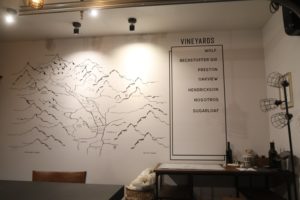
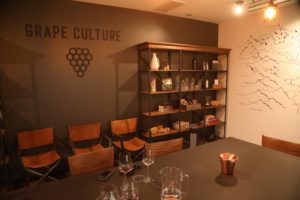
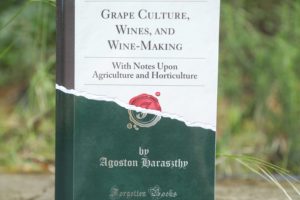 In 2021 Grape Culture sourced Sauvignon Blanc (Sauvignon Musqué clone) from a small vineyard in St. Helena. Collin mention that with this clone, “if it tastes good in the vineyard, then it’s too late” referring to non-desired characteristics obtained from over ripeness. Rather they styled this wine to capture the variety’s freshness both on the bouquet and the palate and their earlier harvest reflects this. The 2021 Grape Culture Napa Valley Sauvignon Blanc is well layered on the bouquet with layers of floral aromatics including citrus blossom, jasmine and hints of honeysuckle. As the bouquet evolves it shows stone fruit including nectarine and white peach. The first word we wrote was balance when tasting this wine. It is clean and crisp across the palate with flavors of apple, kiwi and gooseberry. Lingers brightly with plenty of ‘motion’ due to the acidity. As Colin stated, “this wine is higher toned, but the curves are all in the right place”.
In 2021 Grape Culture sourced Sauvignon Blanc (Sauvignon Musqué clone) from a small vineyard in St. Helena. Collin mention that with this clone, “if it tastes good in the vineyard, then it’s too late” referring to non-desired characteristics obtained from over ripeness. Rather they styled this wine to capture the variety’s freshness both on the bouquet and the palate and their earlier harvest reflects this. The 2021 Grape Culture Napa Valley Sauvignon Blanc is well layered on the bouquet with layers of floral aromatics including citrus blossom, jasmine and hints of honeysuckle. As the bouquet evolves it shows stone fruit including nectarine and white peach. The first word we wrote was balance when tasting this wine. It is clean and crisp across the palate with flavors of apple, kiwi and gooseberry. Lingers brightly with plenty of ‘motion’ due to the acidity. As Colin stated, “this wine is higher toned, but the curves are all in the right place”.
Typicité (the word for typicity in French) refers to the purity of how well a grape variety reflects its inherent varietal characteristics. This is certainly an appropriate name for a variety such as Pinot Noir which when grown in the proper location and made to be a Pinot Noir, shows a very strong typicity. As of our latest visit to the winery, this is the only wine being bottled under this label.
The 2019 Typicité Gap’s Crown Pinot Noir, Sonoma Coast (this very cool vineyard site is located in the Petaluma Gap about 1,000 feet in elevation) is medium ruby in color. About 1/4 of the grapes were whole cluster fermented with partial carbonic fermentation in an open top stainless-steel tank. Collin and Craig’s philosophy when working with this variety is to, “keep it pretty”. The aromatics are bright and appealing with notes of raspberry, cherry cola and red licorice, along with light aromas of chocolate. An initial sweetness of fruit hits the front of the palate with flavors of red cherry and a lingering note of licorice on the finish. It is nicely balanced from start to finish with bright fruit and a hint of earthy but well-integrated tannins.
High Tide is 100% varietal Napa Valley Cabernet Sauvignon sourced from select vineyards throughout the valley. The name pays homage to Robert Mondavi whose philosophy was, “a rising tide carries all ships”, referring to his relentless promotion of Napa Valley as a whole, rather than just his own winery. His beliefs were that improving the reputation of the valley as a whole will improve the stature of individual wineries. The idea for crafting this wine was to source from a variety of different terroirs in the valley ranging from north to south and from valley floor to mountain.
The 2019 Grape Culture High Tide is produced from vineyard sites in Atlas Peak, Calistoga, St. Helena and Yountville. It is opaque and dark ruby in the glass with violet hues on the rim; the bouquet initially offers aromas of sandalwood, old cedar box and cassis. As the wine opens, shows aromas of sage, dried herbs and a meaty note along with plenty of fruit including aromas of plum. This wine has broad palate appeal; it smells good, and it tastes good. Sometimes that is simply the best wine description. The wine is juicy and lively across the palate with flavors of blackberry and boysenberry. Finishes savory with youthful still tightly grained tannins, mouthwatering acidity and notes of darker dried tobacco leaf.
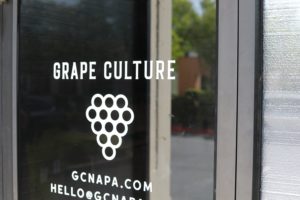
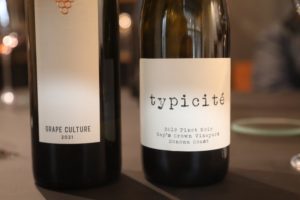
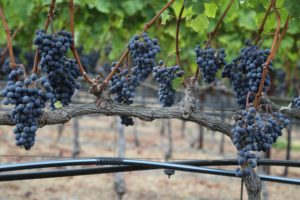 Next Episode is named in homage both to those who built the wine industry in Napa Valley as well as to their own ‘episode’ in winemaking, referring to the current generation of Napa Valley winemakers who continue to strive for excellence. The 2019 Grape Culture Next Episode Cabernet Sauvignon, Wolf Vineyard St. Helena is 100% varietal. The bouquet offers sweet aromatics including dark cherry and black licorice along with darker spices and some hints of mocha. The wine is juicy across the palate with flavors of blackberry and boysenberry. The dark and light gravelly tannins are still a little tightly wound in their youth. One non-technical term to describe this wine is, ‘a crowd pleaser.’
Next Episode is named in homage both to those who built the wine industry in Napa Valley as well as to their own ‘episode’ in winemaking, referring to the current generation of Napa Valley winemakers who continue to strive for excellence. The 2019 Grape Culture Next Episode Cabernet Sauvignon, Wolf Vineyard St. Helena is 100% varietal. The bouquet offers sweet aromatics including dark cherry and black licorice along with darker spices and some hints of mocha. The wine is juicy across the palate with flavors of blackberry and boysenberry. The dark and light gravelly tannins are still a little tightly wound in their youth. One non-technical term to describe this wine is, ‘a crowd pleaser.’
The 2019 Grape Culture Lifted is from the Hendrickson Vineyard located on Atlas Peak at about 1,500 feet, bordering Stagecoach Vineyard, an appropriate name considering the site’s elevation. We have been in this part of Atlas Peak a number of times; the soils are iron rich, red and extremely rocky. This 100% varietal Cabernet Sauvignon is dark ruby in color with well-layered darker fruit aromatics including dark cherry and blackberry. The bouquet is clearly about the fruit aromatics, but it is also complemented with light aromas of mocha and chocolate. Offers plenty of mountain depth and character across the plate with flavors of blackberry and plum. Lingers savory with bright acidity and long-lasting tannins showing a robust grip.
The 2019 Grape Culture Georges III Vineyard Rutherford Cabernet Sauvignon is 100% varietal; this wine is dark ruby in color and offers aromas of blackberry and boysenberry along with a cigar/dried tobacco leaf note and hints of mocha. This is a quintessential Napa Valley Cabernet Sauvignon that is loaded with intensity of flavor, depth across the palate and structure. The tannins are persistent, chewy and frame a very long finish.
On a whim, Collin reached out to viticulturist Brenae Royal, who oversees Louis Martini’s historical Monte Rosso Vineyard in neighboring Sonoma County. Short story, they ended up getting access to several of the Zinfandel blocks including some of the oldest Zinfandel on the property and began making a Zinfandel from this property in 2020.
Nottingham Cellars
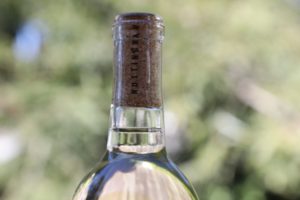
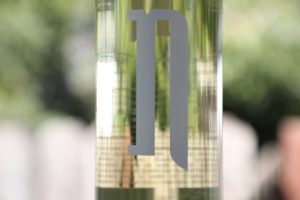 The 2023 Nottingham Cellars Sauvignon Blanc Russian River Valley is pale yellow; this was the first 2023 bottling we tried from any producer. The aromatics are immediately floral including star jasmine, honeysuckle and citrus blossom. There are also scents of stone fruits including yellow nectarine and apricot along with ripe pear, red apple and a lemon zest. Its a spring like day at the end of winter as we write this with temperatures around 26 Celsius and perfectly clear skies. And we spent most of the afternoon driving around Livermore enjoying the warm sunshine and the beautiful scenery which shows the brightest on days like this. This wine is pure springtime in a glass. The palate offers flavors of pomelo, grapefruit, white peach and mandarin orange and lingers with a note of lemongrass. Balanced and delicious, this wine is not green or grassy but it offers enough herbal varietal characteristics to know it is Sauvignon Blanc.
The 2023 Nottingham Cellars Sauvignon Blanc Russian River Valley is pale yellow; this was the first 2023 bottling we tried from any producer. The aromatics are immediately floral including star jasmine, honeysuckle and citrus blossom. There are also scents of stone fruits including yellow nectarine and apricot along with ripe pear, red apple and a lemon zest. Its a spring like day at the end of winter as we write this with temperatures around 26 Celsius and perfectly clear skies. And we spent most of the afternoon driving around Livermore enjoying the warm sunshine and the beautiful scenery which shows the brightest on days like this. This wine is pure springtime in a glass. The palate offers flavors of pomelo, grapefruit, white peach and mandarin orange and lingers with a note of lemongrass. Balanced and delicious, this wine is not green or grassy but it offers enough herbal varietal characteristics to know it is Sauvignon Blanc.
The 2021 Nottinghma Cellars The Pivot is 91% Cabernet Sauvignon, 5% Cabernet Franc and 4% Petit Verdot. This wine is deep ruby and nearly opaque; the bouquet smells lovely and is highly aromatic. It is dark fruited with aromas of blackberry, plum and blueberry along with a note of dark chocolate. There is also a darker floral component including violets. But the focus is clearly on its primary fruit characters rather than secondary aromatics. The palate delivers flavors of blackberry. boysenberry, dark raspberries and Santa Rosa plum. This is a simultaneously complex yet also easy drinking red wine. The tannins are comfortable, feel lightly grainy and are felt more on the front of the palate than the rear; they are seamlessly integrated on the finish. This wine lingers with a light note of dried tobacco and a dusty character; both ultimately outpace the fruit.
Hospitality
Visitors will typically meet with either Craig or Collin or both at their industrial park located winery about a 10 minutes’ drive south of the city of Napa. This space was formerly used as storage and was converted to a winery after they moved here in 2021. They completed their first full harvest in the space in 2021. This is a working winery and visitors will often see direct winemaking in action, especially during harvest.
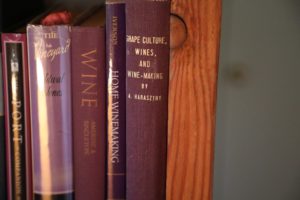 A cozy tasting room is directly next to their wine operations. One cannot miss seeing the prominently displayed quote on the exterior wall of the tasting room, taken from Agoston Haraszthy’s book Grape Culture, “I was gratified to find that of all the countries through which I passed, not one possessed the same advantages that are to be found in California; and I am satisfied that even if the separate advantages of these countries could be combined into one, it would still be surpassed by this state when it’s now dormant resources shall be developed”.
A cozy tasting room is directly next to their wine operations. One cannot miss seeing the prominently displayed quote on the exterior wall of the tasting room, taken from Agoston Haraszthy’s book Grape Culture, “I was gratified to find that of all the countries through which I passed, not one possessed the same advantages that are to be found in California; and I am satisfied that even if the separate advantages of these countries could be combined into one, it would still be surpassed by this state when it’s now dormant resources shall be developed”.
A unique experience is offered through a partnership between Grape Culture and the Napa Valley Car Club. Guests will drive a super car followed by a tasting of the Grape Culture wines at the Napa Valley Car Club headquarters in the Oxbow District, next to the Napa River.
And a hand painted grape themed mural is next to the Haraszthy quote, created by friend and artist Sean Machoff. It includes several images including one portraying a likeness of Golden State Warriors basketball player, Stephen Curry.
—
Total production is around 1,000 cases but continues to grow. Locally select Grape Culture wines are found at K. Laz tasting salon in Yountville, ACME Wines in St. Helena and at Solage in Calistoga. For more information including to purchase these limited production wines, or to join The Grape Culture Society and or to make an appointment for a tasting, please visit: www.gcnapa.com or www.syndicate-wines.com

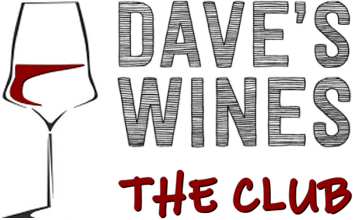




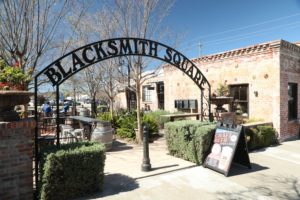

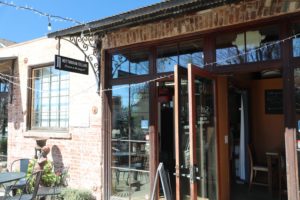
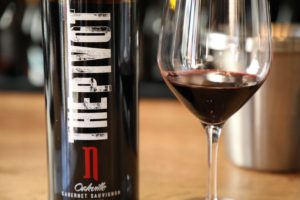
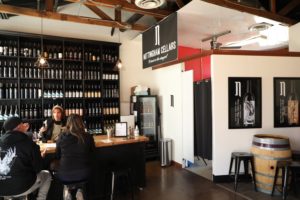
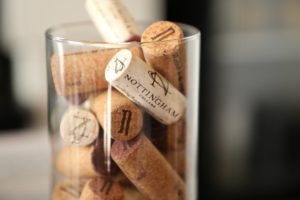
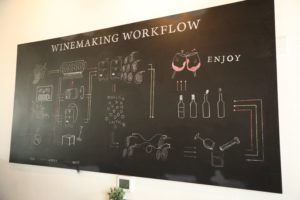
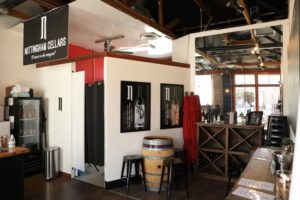
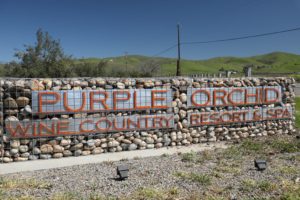
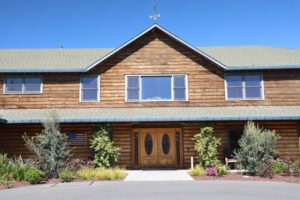

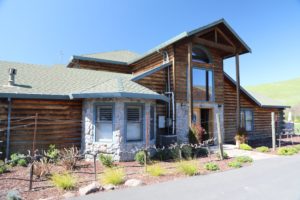
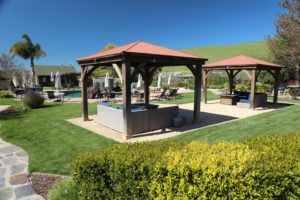
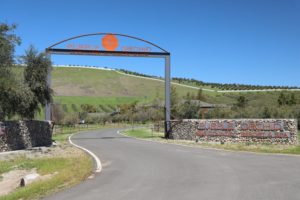
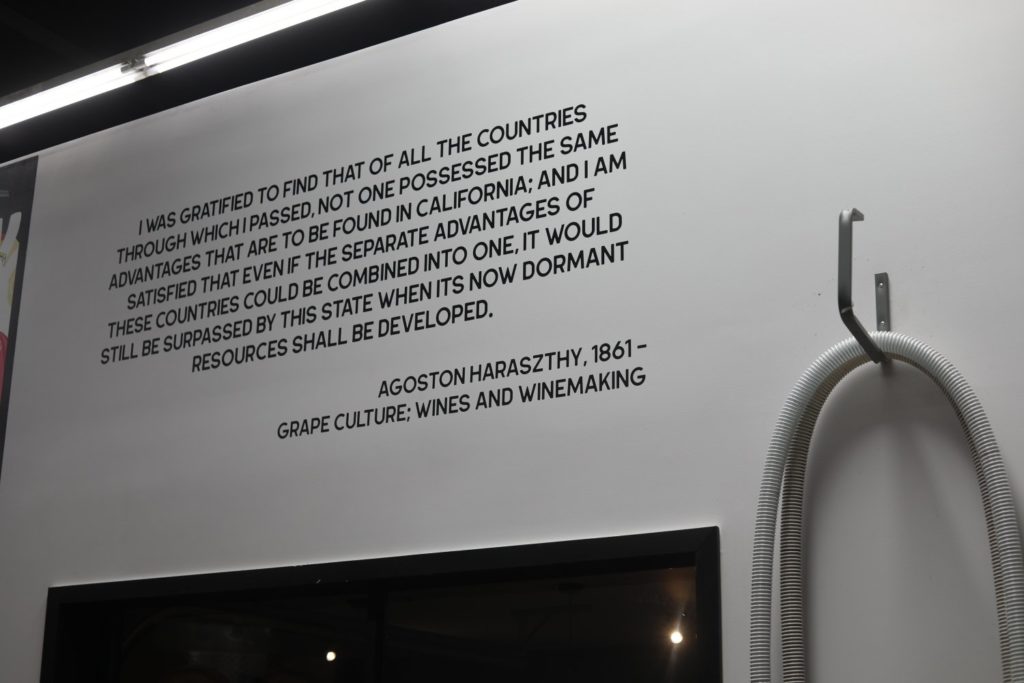
Leave a Reply